The Arabian Peninsula or Arabia is the peninsula in southwestern Asia and northeast of Africa. The peninsula, which is mostly deserted, is a geopolitically important region of the Middle East due to its oil and natural gas resources. Most of the population in the region is of Arab and Muslim origin.
In addition, the peninsula is the place where the religion of Islam emerged. To the west is the Red Sea, to the southeast the Sea of Oman, and to the east the Arabian Gulf. The main parts of the peninsula are the mountainous Hejaz in the west, Najd in the interior and Hadjar in the east, and Oman and Yemen regions, which are also country names.
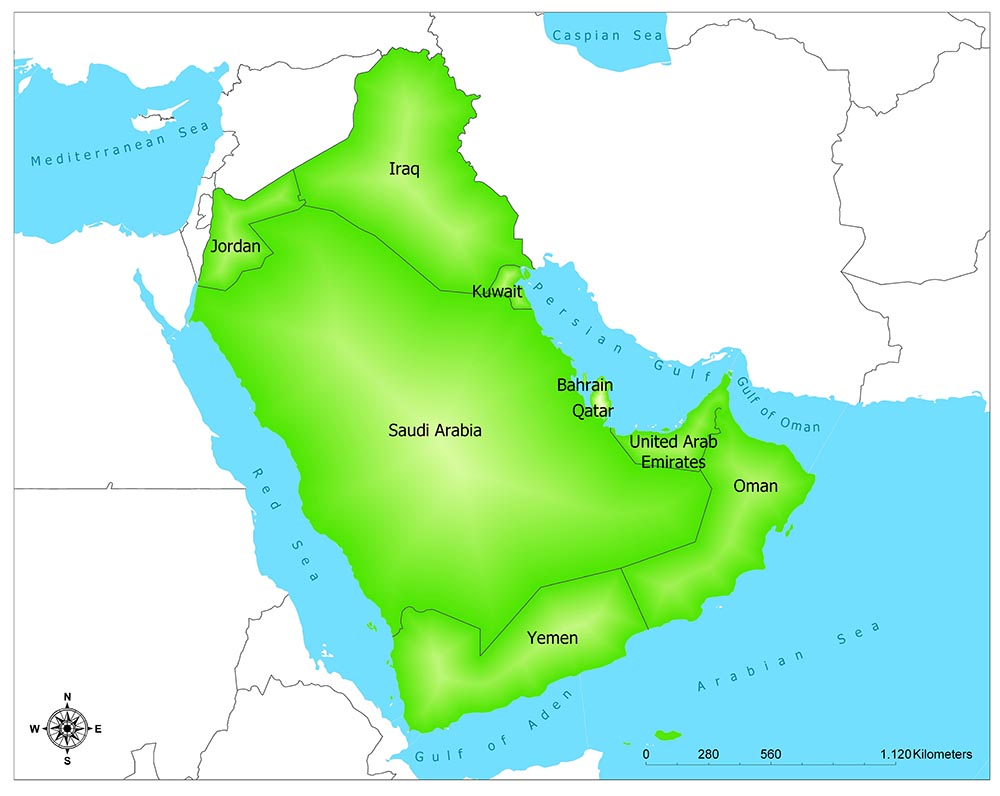
The countries in the peninsula are Saudi Arabia, Yemen, Oman, United Arab Emirates, Qatar, Bahrain, Kuwait, Iraq, and Jordan. Of these, a part of Iraq and Jordan remain outside the Arabian peninsula.
The Arabian Peninsula is the largest peninsula in the world. The peninsula with an area of 3,237,500 square kilometers is surrounded by the Arabian Sea and the Gulf of Aden in the south, the Red Sea in the west, the Persian Gulf in the east and the Gulf of Oman.
Countries Largest to Smallest in Arabian Peninsula
Arabian Peninsula has an area of 3,237,500 square kilometers. With this number, it became the largest peninsula in the world. The rankings of the countries in the peninsula are as follows. Around 80 million people live in the Arabian Peninsula.
1. Saudi Arabia
Riyadh is the capital. It covers more than half (66%) of the Arabian Peninsula. The country has an area of 2,150,000 square kilometers and has a population of 33.8 million.
2. Yemen
The country, whose capital is Sana’a, is the country south of the Arabian Peninsula. The total area of the country is 527,968 square kilometers. The country constitutes 16% of the Arabian Peninsula. The country’s population is 29.2 million.
3. Iraq
The country with its capital Baghdad is the most northern part of the Arabian Peninsula. The total area of the country is 437,072 square kilometers. Only an area of less than 10% of Iraq is in the Arabian Peninsula.
4. Oman
Its capital is Muscat, which is located southeast of the Arabian Peninsula. The total area of the country is 309,501 square kilometers. The country constitutes 9% of the Arabian Peninsula. The country’s population is 4.9 million.
5. Jordan
Its capital Amman and it is located in the northwest of the Peninsula. The total area of the country is 89,342 square kilometers. Only a part of the country is within the borders of the Arabian Peninsula. The country’s population is about 10 million.
6. United Arab Emirates
Its capital is Abu Dhabi, east of the Arabian Peninsula. The total area of the country is 83,600 square kilometers. The country constitutes 2% of the Arabian Peninsula. The country’s population is approximately 9.6 million.
7. Kuwait
Its capital is Kuwait City. It is one of the small countries in the Arabian Peninsula. The total area of the country is 17,818 square kilometers. The country constitutes 0.5% of the Arabian Peninsula. The country’s population is about 4.2 million.
8. Qatar
Its capital is Doha. It is one of the smallest countries in the Arabian Peninsula. Total area of the country is 11,571 square kilometers. The country constitutes 0.3% of the Arabian Peninsula. The country’s population is about 2.7 million.
9. Bahrain
Bahrain, whose capital is Manama, is one of the small countries in the Arabian Peninsula. The total area of the country is 765.3 square kilometers. The country constitutes less than 0.1% of the Arabian Peninsula. The country’s population is about 1.6 million.
Climate of Arabian Peninsula
The climate of Arabia is generally warm in the high regions due to its soil. The regions where the climate is most suitable are the Necid Desert with regions close to Yemen. There are severe temperatures and drought in the Dehna Desert and Tehame regions. In Tehame there is usually no precipitation and the average temperature is around 37 ° C. In the deserts where there is no rain, the temperature is around 38 ° C at night and 43 ° C during the day.
The Hijaz and the south have a moderate air. Even Medina and Taif are snowing in winter. The average annual rainfall is 160 to 180 mm. However, the partial greenery, which occurs in the rains, dries up in the ashes with dry winds called hot and stifling sam (semum).
Important Places to See in Arabian Peninsula
Religion and Desert tourism are common in the Arabian Peninsula. Tourism in the peninsula affects the extreme heat negatively.
Arabian Peninsula’s most touristy area is Mecca and Medina in Saudi Arabia. These two cities are visited every year by millions of people who want to fulfill their religious duties and want to see the tourist destination. In addition, Doha, the capital of Qatar, attracts tourists from all over the world with its magnificent location on the Persian Gulf coast, its magnificent architectural structures, cultural riches and rapidly developing structure.
Bahrain is a country that has been fused with many civilizations due to its historical and geopolitical location. For this reason, you can find magnificent buildings and interesting historical areas in the country. Bahrain is a very attractive destination for the visitors with its many attractions.
Yemen, which is a tourist region attracting attention with its different culture in the Arabian Peninsula, also has a difficult time in terms of tourism due to the ongoing armed conflicts in the country. Known as the Happy Arabia before the civil war, and one of the most important cultural and tourism centers of the Arabian Peninsula, this country attracts attention with its spectacular cultural and historical values on the UNESCO World Heritage List.
History of Arabian Peninsula
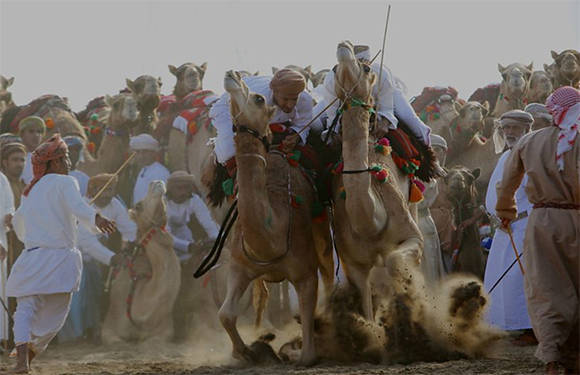
Two different regions can be mentioned in the Arabian peninsula. One of these is the large part of the peninsula, which we can call the mainland, the other is the northern areas that occupy a narrower area and are sharply distinct from the mainland. Desert, the mainland is sparsely populated, while fertile areas boil with the man. However, since the desert connects fertile areas, there has been intense interaction between the two regions and has been decisive on the history of the region.
The green areas in the region are also separated from each other for their use. While the northwestern and southwestern parts offer generous greenery that can be used by humans, the greenery in the north does not go beyond the inefficient mountain tropical colors. In the south, a mixture of the other two regions can be seen. On one side you can buy fertile plains and palm trees, on the other hand, barren green fields. This becomes more evident in the transition to the desert climate. These topographical conditions have also determined the animals used in the region. Contrary to popular belief, the Arabian desert has a wide flora for animals.
In the 1500s, the animal was born as an aesthetic creature and a means of war. It was used as an effective combat vehicle by the Ari tribes invading the region in 1500-900 BC and it was the determinants of the effects of these tribes on the region. Under these conditions, it is a sign of aesthetic pleasure in the region as well as being used as a determining element of wars; There were more than two hundred words about the Arabic language, which also jumped to Arabic. Despite all this, it can be said that the horse has difficulty in adapting to the region’s geography. This magnificent creature, not accustomed to arid climates and soft soils, has lost the supremacy to the camel, which is far more advanced than its predecessor.
The camel is an indispensable vehicle for the people of the region. As the camel becomes dehydrated, its milk becomes more sweet and salty, which makes it indispensable for its owner on long and tiring journeys in the desert. The camel was domesticated in Arabia in 2000 BC. In 3000 BC, the remains of Bactrian camels were found in Iran and Turkestan, while the first giant buildings and tablets about camels were found in the traditional ell-successor sites in 1100 BC. Camel also played an active role in the battles of Arabs as well as horses. The Arabs gave countless names to the camels according to their age, gender, color, and physical character, as they did for the horse and the lion.
Demography of Arabian Peninsula
People in the Arabian peninsula belong to a single race called Caucasian or Western Asian, Sami or Semitic. The concept of Sami, as a result of archaeological research carried out in the Fertile Crescent region, was introduced by the scholars of the Old Testament, who for the first time realized the existence of Semitic people, languages, and civilizations in addition to the Hebrew, Arab and Abyssinian people in the region.
In the light of the genealogies of the Old Testament, Sam or Shem and all of the descendants of Noah, or all of the ancient Near East tribes who spoke the language of that line, were called Sami. Although this title is generally accepted, it is invalid for two reasons. First, according to the Old Testament, Noah and his sons were saved from the flood of Noah. There is no evidence that a flood that completely surrounded the world took place at that time. Furthermore, the Qur’an says that the flood was given to Noah’s people to be punished and to be a sign of other people.
Secondly, none of the societies called Sami, except the Jews of the West, did not see themselves as Shem’s or Noah’s biological descendants. Old Near Eastern people do not consider themselves as racial. The basic criteria for them are language, religion, culture and the political regime in which they live. There is no concept of race in the Arabian Peninsula except the Hebrews. Actually, the actors of the Arabian area are natives. Except for the Phoenicians and migrations to Egypt under the rule of Islam, the movements in the region were not outside or inside. Therefore, it is possible to mention only internal population movements in the region.
Migration Movements in Arabian Peninsula
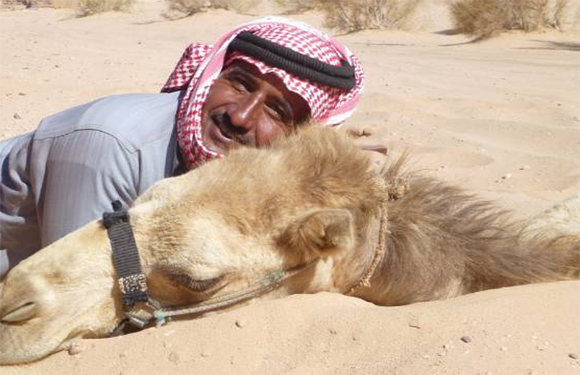
Throughout the history of the region, there have always been migrations from pastures to agricultural areas, from agricultural areas to pastures. The Arabian peninsula and its fertile lands were always full of people. Desert scarcity has shaped the human character with the strict lifestyle it provides, and it has provided some special differences to human and the development of human and social characteristics. Features such as taking instincts, generosity, group loyalty, mind occupation, imagination and portrayal ability to be disciplined have been gained due to the necessity of desert life.
Even though the desert forces people, it does not make life impossible. As a result of these continuous movements towards the farm areas from the desert, we see that the relations between the farmer and the shepherd turn into a rich literature. In the story of Dumuzi and Edikumdu, one of the oldest Sumerian poems, migration takes a docile manner; but it is difficult to say that these movements are always like this. This can lead us to the idea that there are very fierce battles, but this is not a very valid idea. Immigrants are events that have found their way in very long periods of time. It is not possible for a tribe to migrate like an organized army. These movements occurred in the form of the assimilation of these tribes in the culture they migrated or the fusion of culture.
From the earliest times, the people of the Arabian peninsula migrated to the fertile areas in the north. As a result of their journey to the north, they came to Mesopotamia. This fact corresponds to the description of the Sumerians as nomads from the south. After the taming of the camel, migrations from east to the west began to occur.
Transition from Resident to Migration
Three factors can be seen to cause this behavior. First, it could be a strong flood or other natural disaster that hurt the city life. As a result of the great damage caused by the destruction of a large dam in the Saba kingdom in the 5th century, we can learn the story of the tribes like Ezd who had to emigrate from this fertile land from the Arab tradition.
Secondly, ideological discrepancies with the current regime in the city can be shown. Especially for those who were persecuted for their persecution because of their opposition, the desert was an excellent hiding place. The third reason is that the freedom and the simplicity that desert life provides to people, the wide time it provides for contemplation, the superiority it brings for generosity and goodness, the superiority of love and generosity, make the desert life superior to the life of the inhabitants. All of these features lead the desert people to consider itself superior to the people in the city, prefer desert life to life in farms and in the city, the desert is more prestigious.
Foreign Population Movements
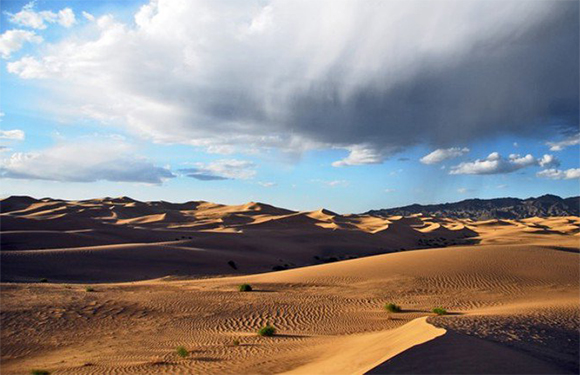
The region has witnessed some attacks from outside during the history. Hittites, known as mountain men, entered Arabia from Anatolia in 1535 BC and tried to dominate the Syrian region. Together with the Hittites, Hurrians came from the Caucasus and conquered North Mesopotamia. The most important of the states established by these tribes in the region is the Mitanni state. This state, which ruled for almost 150 years, reached quite wide borders.
“Mountain People” was a mixture of indigenous and Indo-Europeans settled in the region as a result of migration. Their managers and nobles consisted of Indo-Europeans. The strategic weapons of the era and the dominance of the car have increased them to the management group. Although they try to maintain the class distinction, they have succumbed to the oppression of the locals who insist on using their own culture. In time, the end of all the tribes who conquered these lands was to be assimilated in the conquered culture. The language and culture of the region have influenced wide geography as the cuneiform tablets in this region roam the whole of Anatolia by the invading tribes.
Persians
A community that is assimilated and does not lose its dominance is noteworthy in this environment. This community is the Persians. Persians who dominated Babylon, Syria, and Egypt, continued their rule in these regions throughout the century, although they were weakened and defeated by various commanders. But the rebellions and ruthless wars and suppressive power in the region, which led to the imposition of their sons, Darius and Xerxes, who came after Kurus after imposing an elite version of Zoroastrianism, on the people, and the oppressive power in the region, led to the weakening of the power of the Persians in the region and their weakness in the region after a while.
Was Arabian Peninsula Once a Forest?
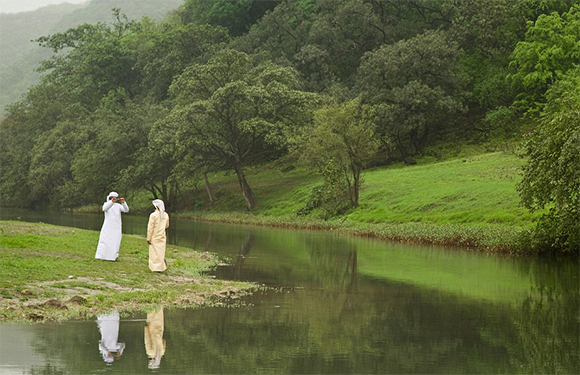
Arabia is a desert today, but it is thought to have been covered by dense vegetation and forest when it was a transit point for the first people from Africa to the world.
Today, the first thing that comes to mind in Arabia is the hot sun and desert. But not so long ago, it was covered with green pastures and forests, irrigated by heavy monsoon rains. These findings can shed light on the question of why and how the first modern man evolved in Africa was separated from this continent. If Arabia was once covered with green, fertile soil, it was an ideal place for people to emigrate.
Ash Parton of the University of Oxford says people had more opportunities to leave Africa than we thought. The findings of Parton and his team reveal that monsoon rains have reached up to the inner parts of Arabia every 23 thousand years and thus diversifies vegetation and animals.
The modern man appeared in Africa about 200 thousand years ago. Later, some of them migrated to Europe and Asia and spread to other parts of the world. But it is not known exactly when these people left Africa and how they followed. According to the most accepted view, this migration, which began 60 thousand years ago, extended from the Arabian coasts to southern Asia.